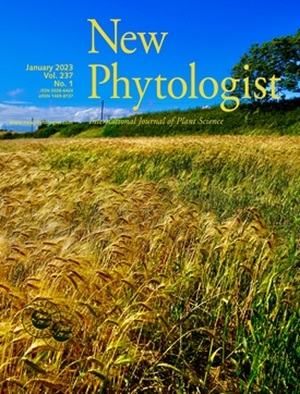The collector practices that shape spatial, temporal, and taxonomic bias in herbaria.
IF 8.3
1区 生物学
Q1 PLANT SCIENCES
引用次数: 0
Abstract
Natural history collections (NHCs) are essential for studying biodiversity. Although spatial, temporal, and taxonomic biases in NHCs affect analyses, the influence of collector practices on biases remains largely unexplored. We utilized one million digitized specimens collected in the northeastern United States by c. 10 000 collectors to investigate how collector practices shape spatial, temporal, and taxonomic biases in NHCs; and similarities and differences between practices of more- and less-prolific collectors. We identified six common collector practices, or collection norms: collectors generally collected different species, from multiple locations, from sites sampled by others, during the principal growing season, species identifiable outside peak collecting months, and species from species-poor families and genera. Some norms changed over decades, with different taxa favored during different periods. Collection norms have increased taxonomic coverage in NHCs; however, collectors typically avoided large, taxonomically complex groups, causing their underrepresentation in NHCs. Less-prolific collectors greatly enhanced coverage by collecting during more months and from less-sampled locations. We assert that overall collection biases are shaped by shared predictable collection norms rather than random practices of individual collectors. Predictable biases offer an opportunity to more effectively address biases in future biodiversity models.收集者在植物标本室中形成空间、时间和分类偏差的做法。
自然历史资料是研究生物多样性的重要资料。虽然国家卫生保健中心的空间、时间和分类偏差影响分析,但收集者的做法对偏差的影响在很大程度上仍未被探索。我们利用大约1万名采集者在美国东北部收集的100万份数字化标本,调查采集者的做法如何影响国家卫生保健中心的空间、时间和分类偏差;以及多产和不那么多产的收藏家的做法之间的异同。我们确定了六种常见的采集方法或采集规范:采集者通常在主要生长季节采集不同的物种,从多个地点采集,从其他人采样的地点采集,在高峰采集月份之外可识别的物种,以及来自物种贫乏的科和属的物种。在过去的几十年里,一些标准发生了变化,不同的分类群在不同的时期受到青睐。收集规范提高了国家卫生保健中心的分类学覆盖率;然而,收集者通常避免大型、分类复杂的群体,导致他们在国家卫生中心的代表性不足。较少的收集者通过在更多的月份和较少采样的地点进行收集,大大提高了覆盖范围。我们断言,总体的收集偏差是由共同的可预测的收集规范而不是个别收藏家的随机做法形成的。可预测的偏差为更有效地解决未来生物多样性模型中的偏差提供了机会。
本文章由计算机程序翻译,如有差异,请以英文原文为准。
求助全文
约1分钟内获得全文
求助全文
来源期刊

New Phytologist
生物-植物科学
自引率
5.30%
发文量
728
期刊介绍:
New Phytologist is an international electronic journal published 24 times a year. It is owned by the New Phytologist Foundation, a non-profit-making charitable organization dedicated to promoting plant science. The journal publishes excellent, novel, rigorous, and timely research and scholarship in plant science and its applications. The articles cover topics in five sections: Physiology & Development, Environment, Interaction, Evolution, and Transformative Plant Biotechnology. These sections encompass intracellular processes, global environmental change, and encourage cross-disciplinary approaches. The journal recognizes the use of techniques from molecular and cell biology, functional genomics, modeling, and system-based approaches in plant science. Abstracting and Indexing Information for New Phytologist includes Academic Search, AgBiotech News & Information, Agroforestry Abstracts, Biochemistry & Biophysics Citation Index, Botanical Pesticides, CAB Abstracts®, Environment Index, Global Health, and Plant Breeding Abstracts, and others.
 求助内容:
求助内容: 应助结果提醒方式:
应助结果提醒方式:


